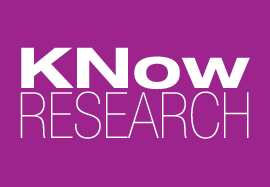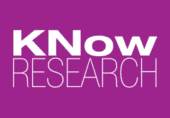What’s in a Name?
The insights/market research industry has endured a lot of bad press from innovators and thinkers, most memorably Steve Jobs: “It’s really hard to design products by focus groups. A lot of times, people don’t know what they want until you show it to them.”
And from the beginning our industry has been up against a quote going even farther back, to Henry Ford saying: “If I had asked people what they wanted, they would have said faster horses.”
And so, we as an industry have tried to emphasize that qualitative research is not about “asking people what they want.” It is instead about exploring current behaviors, unmet needs, pain points, etc. It’s about listening for preferences, dreams, wishes, frustrations and most importantly, patterns that connect all of those behaviors and feelings to help companies and brand offer new, improved, appreciated solutions and innovations.
To do so, we engage people, talk to them, observe them and most importantly listen to them. We do this one on one, in groups, in-person, remotely and/or in-situ. We do this synchronously and asynchronously. In traditional spaces and creative ones. And we need terms for these engagements.
However, traditional terms such as “focus group” can now sound antiquated, traditional or stodgy. So, the industry has shifted slightly to call them any number of things now, including: Group Discussions, Qualitative Group Discussions, Consumer Connects, Think Tanks, VIP Panels, etc. This re-naming hopes to prevent current techniques from being painted with an antiquated brush. We at KNow developed QIIs (qualitative intercept interviews) in part to separate our methodology from traditional clipboard-enabled mall intercepts, so we definitely understand the impulse!
Beyond terminology though, lies a bigger issue. Re-naming alone cannot lift stigma, but careful implementation can.
To do so, carefully assess when it’s best to talk to people in a group before proposing a “focus group” (by that name or any other). Ask yourself the following questions:
- In their day-to-day lives, do people talk about this topic naturally in groups?
- Will people be able to accurately remember their reality and share examples of behavior easily with a group?
- What are the potential benefits of discussing the topic in a group setting? Will the group give you energy, collaboration, idea-building, team-work, the ability to run mock debates or conduct team exercises that will bring the feedback to life in a helpful way?
- Do you benefit from an efficiency standpoint? Remember, it’s much easier to get a larger sample size in a shorter period of time if you talk to participants in groups rather than individually. This is also important to consider when you have limited stakeholder availability (e.g. the team can only set aside one day to observe research and wants to hear from as many participants as possible)!
If the answer is “no” to any of those questions, it’s time to get creative and consider other methods:
- Add a digital diary homework assignment to track recent behavior
- Complete the entire study on a digital discussion board or diary platform to track behavior in-the-moment.
- Consider one-on-one interviews to get individual feedback, uninfluenced by others. If there are time constraints consider shorter, laser-focused interviews and/or multiple moderators completing simultaneous interviews.
- Try mini groups with people who know each other. This works especially well with families or partners who make decisions together or friends who shop together.
- Employ a ‘funnel’ approach’ in which a larger group participates in individual interviews/activities/exercises and a smaller subset are chosen for a follow-up group discussion.
What else do you call “focus groups”? Why are those names helpful? When do you have to change more than just a name for the benefit of the project?

